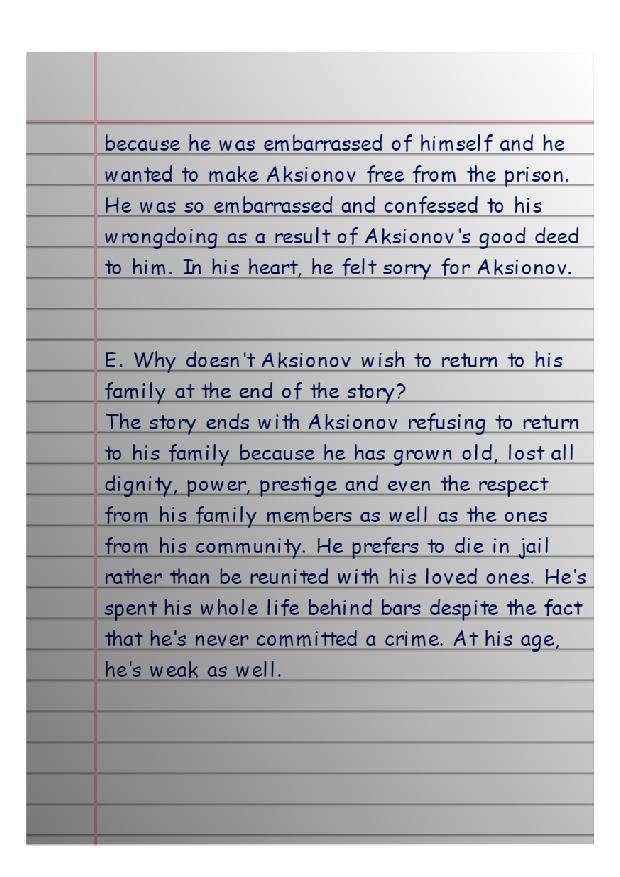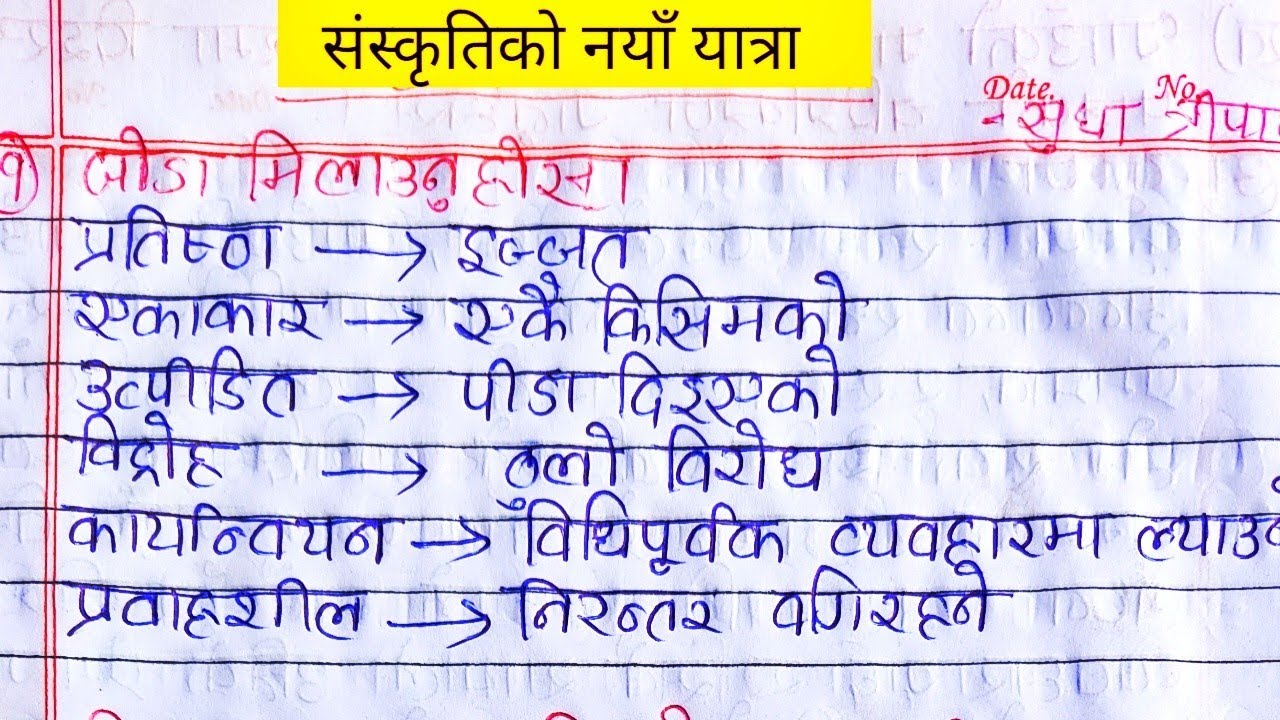God Sees the Truth but Waits: Exercise Questions & Answers
Scroll down to the bottom for the summary of this story!










God Sees the truth but waits Summary
Ivan Dmitrich Aksionov, the protagonist of Leo N. Tolstoy's 'God Sees the Truth, But Waits,' suffered as a result of someone else's actions but trusts in God to see him through his tribulations.
Unfortunately for Aksionov, his problems begin when he visits the Nizhny Fair despite his wife's warnings not to attend since she had a terrible dream. In the course of his journey, he ran across an old friend. Afterwards, they spent the night together and made reservations for neighbouring rooms at an inn. Aksionov got up early the following day to finish his journey.
A soldier stops Aksionov about 25 miles down the road and accuses him of killing his friend because they saw him with the guy the night before he was killed and because his early morning departure seemed suspicious. They discover a bloodied knife as they go through Aksionov's things. Witnesses from Aksionov's hometown say that he is a kind guy, but that he used to drink heavily at past. Even Aksionov's wife is beginning to have doubts about his virility. As a result of his conviction, he will spend the next 26 years in a Russian jail.
When a guy from Aksionov's hometown is sent to Siberia as well, Aksionov becomes suspicious of Makar Semyonich and enraged. Later, Aksionov comes upon Semyonich as he is digging a tunnel to get away. A warning is given from Semyonich that if Aksionov informs anybody else, he'll murder him.
When a guard finds the dig, Aksionov is confronted, but he refuses to answer any questions. Semyonich was flabbergasted by his action and then begs for pardon and confesses due to Aksionov's honesty, is found guilty after 26 years of innocent prison life of Aksionov. At this point, Aksionov has given up on returning to his family and is content with being with the Lord.
God Sees The Truth But Waits Questions Answers
Understanding the text
a. What bad habits did Aksionov have before his marriage?
Ans: He used to drink before his marriage and was raucous when he drank too much.
b. What can be the meaning of his wife's dream?
Ans: Aksionov’s wife's dream is a foreshadowing of his tragic destiny.
c. Why did Aksionov think of killing himself?
The terrible circumstances Aksionov had experienced without committing any crimes haunted him, and he contemplated of doing suicide. A lot of things came back to him, including all the faced torture, the people who were around him when he was imprisoned (including other inmates), his old age, and the fact that he had spent 26 years in jail. He had a very unpleasant feeling of losing all dignity, power, prestige and even the respect from his family members as well as the ones from his community.
D. Why did Makar disclose that he had killed the merchant?
Makar disclosed the culprit of the merchant's murder, saying he did it because he was embarrassed of himself and he wanted to make Aksionov free from the prison. He was so embarrassed and confessed to his wrongdoing as a result of Aksionov's good deed to him. In his heart, he felt sorry for Aksionov.
E. Why doesn't Aksionov wish to return to his family at the end of the story?
The story ends with Aksionov refusing to return to his family because he has grown old, lost all dignity, power, prestige and even the respect from his family members as well as the ones from his community. He prefers to die in jail rather than be reunited with his loved ones. He's spent his whole life behind bars despite the fact that he's never committed a crime. At his age, he's weak as well.
Visit: www.tsz.com.np for more!
Reference to the text
a. "Well, old man," repeated the Governor, "tell me the truth: who has been digging under the wall?"
Ans:
i. Who is that old man?
Aksionov is that old man.
ii. Which truth is the speaker asking about?
The speaker is asking about the reality of tunnel digging.
iii. Which wall does the speaker mean?
This refers to the wall of the jail.
B. Describe Aksionov's character.
Aksionov is the protagonist of the story. He was a well-to-do young Russian businessman from Vladimir. He was a tall, slim guy. He has been a generous guy after marriage. But due to various circumstances, he was accused of murder. In addition to murder, he was accused of robbing and stealing from a fellow trader. A kind guy, he remained silent till the end, but destiny intervened, and he perished in jail. For him, it was important to be physically and psychologically strong, as shown by his ability to cope with numerous traumatic experiences such as losing everything he had and his company. He had virtues like forgiveness, trust, and acceptance. Last but not least, the way he grew closer to God in the midst of his most difficult situations was a prominent feature of the character. He endured a lot while inside jail and spent the most of his twenty-six-year sentence praying for mercy from God and eventually died at last.
C. What is the theme of the story?
Forgiveness and faith are two major themes expressed throughout the story. The fact that Aksionov has spent 26 years in jail for a crime,though he did not commit crime, does not stop him from believing in god. In addition, the story revolves on guilt, forgiveness, faith, conflict, and acceptance as key themes. Aksionov’s forgiveness to Makar Semyonich may be found here. There is no better kind of vengeance than forgiveness, as shown in this story.
D. Which symbols are used in the story and what do they indicate?
This story makes extensive use of symbols. The house and stores represent the worldly material possessions that benefit no one and last for all time. In prison, he encounters suffering, torment, and even spiritual change. Prison is where he discovers these things. Aksionov's struggle and ultimate spiritual development are symbolised by the jail itself. In Aksionov, this name of the saint (The Lives of the Saints) represents a change in religious outlook. Aksionov decides to dedicate his whole life to serving God. The terror of the nightmare's effects has been shown in the story. Aksionov's wife's nightmare of Aksionov's grey hair symbolizes Aksionov's terrible fate.













Comments
Post a Comment